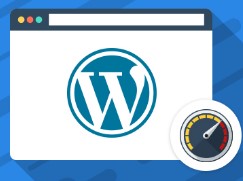When starting a WordPress site, one of the most important decisions you’ll make is choosing the right theme. Your theme affects how your site looks, functions, and performs. It’s essential for providing an optimal user experience, search engine optimization (SEO), and overall site performance. With thousands of WordPress themes available, picking the perfect one can be overwhelming. But by considering key factors such as design, features, performance, and support, you can choose a theme that not only meets your aesthetic preferences but also aligns with your business or personal goals.
In this article, we will guide you through the process of selecting the perfect WordPress theme for your site by focusing on several important aspects that will ensure a smooth and successful experience. From design elements to technical considerations, we’ll break it down step-by-step.
1. Understand Your Website’s Goals
Before diving into the vast world of WordPress themes, it’s crucial to first define the goals of your website. Whether you’re building a personal blog, an e-commerce store, a business website, or a portfolio, understanding the purpose of your website will help narrow down your theme options.
- Personal Blog: If your goal is to create a blog, you’ll want a clean and easy-to-read design with good typography. A minimalist theme could be a good fit, allowing your content to shine without distraction.
- Business Website: For a business site, look for a theme with professional design elements that also provides the flexibility to showcase your services, products, or portfolio. Choose themes with pre-built page templates, contact forms, and sections for your team or client testimonials.
- E-Commerce Site: If you plan on setting up an online store, you’ll need a theme that’s designed specifically for e-commerce. Look for themes that are compatible with WooCommerce and offer features like product galleries, a shopping cart, and secure checkout options.
- Portfolio: For a creative portfolio, choose a theme that showcases your work with large images and a visually appealing layout. Look for themes with options to display your portfolio items in a grid, slider, or gallery style.
Once you clearly define your site’s purpose, you can start to filter out themes that don’t match your needs.
2. Design and Aesthetics
The design of your website is one of the first things visitors will notice, so it’s essential to pick a theme that not only aligns with your brand but also provides a visually pleasing experience. Here are some design considerations to keep in mind:
- Responsive Design: The theme must be fully responsive, meaning it adapts to all screen sizes (from desktops to mobile phones). A responsive theme ensures your website looks great on any device, improving user experience and SEO.
- Customization Options: Most themes come with customization options, allowing you to adjust colors, fonts, layout, and more. However, some themes offer more flexibility than others. If you want to make significant design changes, ensure that the theme offers a good range of customization options or supports a page builder like Elementor or WPBakery.
- Pre-built Demos: Many premium WordPress themes come with pre-built demo sites that you can import with a click of a button. This can be a huge time-saver, as you’ll have a ready-to-go design that you can customize with your own content.
- Design Style: Choose a theme that reflects your brand’s style and values. Whether you prefer a clean, minimalist look or a more vibrant and detailed design, make sure the theme’s overall aesthetic matches your vision.
3. Performance and Speed
Website speed is one of the most critical factors for both user experience and SEO. If your website takes too long to load, users are likely to leave, resulting in high bounce rates. Additionally, search engines like Google prioritize fast-loading websites in search rankings.
When choosing a theme, consider the following performance-related factors:
- Clean Code: Well-coded themes are more likely to perform efficiently. Avoid themes that come with excessive bloat (unnecessary features and code) that could slow down your site.
- Page Load Speed: A good theme should be optimized for speed. Look for themes that emphasize fast loading times, especially if they include features like high-resolution images or custom animations.
- Mobile Optimization: Since mobile devices now account for a significant portion of web traffic, it’s important to choose a theme that is optimized for mobile performance. Test the theme’s mobile version before making a final decision.
You can use tools like Google PageSpeed Insights or GTmetrix to check the performance of a theme on a demo site before committing to it.
4. SEO-Friendliness
Search engine optimization (SEO) is essential for driving traffic to your site. Even with great content, your website might struggle to rank on search engines if it isn’t built with SEO in mind. A good WordPress theme should be SEO-friendly, helping your content rank higher on Google and other search engines.
Some SEO-friendly features to look for in a theme include:
- Clean HTML/CSS Code: Proper HTML structure and clean code are essential for SEO. Themes with excessive or outdated code can negatively affect your SEO efforts.
- Fast Loading Speed: As mentioned earlier, a fast website improves your chances of ranking well in search engine results. Themes that are designed with performance in mind will help your SEO efforts.
- Schema Markup: Schema markup is a way of structuring your website’s data so search engines can better understand it. Many modern themes include built-in schema markup, which can give you an SEO advantage.
- Optimized for SEO Plugins: Most WordPress themes are compatible with popular SEO plugins like Yoast SEO or Rank Math. However, it’s important to check if the theme supports the specific SEO plugin you plan to use.
5. Compatibility with Plugins
WordPress plugins extend the functionality of your website, and it’s likely that you’ll need to install a few of them to meet your needs (such as security plugins, performance boosters, or form builders). Ensure that the theme you choose is compatible with the plugins you plan to use.
- Popular Plugins: Check whether the theme supports popular plugins like Yoast SEO, WooCommerce, WPForms, and others. If you’re planning to use a page builder like Elementor, ensure that the theme is compatible with it as well.
- Theme Documentation: Well-documented themes often provide detailed instructions on how to install and configure plugins, ensuring that everything works smoothly. Make sure the theme’s documentation is easy to understand and up-to-date.
6. Support and Updates
A good theme should come with excellent customer support and regular updates. Regular updates ensure that your theme is compatible with the latest version of WordPress and that it includes any security patches or bug fixes.
- Customer Support: Before purchasing a theme, check the theme developer’s support reputation. You can look at user reviews or search forums to see how responsive the support team is.
- Updates: Choose a theme that is regularly updated. Themes that haven’t been updated in months or even years can cause compatibility issues as WordPress evolves.
7. Free vs. Premium Themes
WordPress offers both free and premium themes. While free themes are appealing due to their no-cost nature, premium themes often come with more advanced features, better support, and regular updates.
- Free Themes: Free themes are a good starting point for personal projects or small blogs, but they may lack some features or customization options. Some free themes might also be poorly coded, which can affect performance and SEO.
- Premium Themes: Premium themes offer more features, flexibility, and higher-quality design. They often come with regular updates, customer support, and advanced customization options. If your site is business-oriented or requires specialized functionality, investing in a premium theme is often worth it.
8. User Reviews and Ratings
User reviews and ratings can provide valuable insights into the quality and usability of a theme. Reading reviews can help you determine if a theme is truly as good as it looks, and it can provide information on any potential issues or limitations.
Look for themes with positive feedback and high ratings. Pay attention to how long the theme has been on the market and how active its user base is.
9. Check for Security Features
A theme with solid security features can help protect your website from potential vulnerabilities. Some themes come with built-in security features, such as support for SSL certificates, secure login, and protection from malicious scripts. Always ensure that the theme you choose doesn’t introduce security risks to your site.
Choosing the perfect WordPress theme for your site involves a balance between design, functionality, performance, and support. Start by defining your website’s goals, then look for a theme that matches your needs in terms of design, customization options, and features. Don’t forget to consider performance, SEO, plugin compatibility, and security to ensure a smooth and successful website launch.
Remember that while themes can be changed later, it’s always a good idea to choose a well-coded, optimized theme from the beginning to avoid having to switch later on. With the right theme, your website can not only look fantastic but also perform well, engage users, and help you achieve your online goals.



